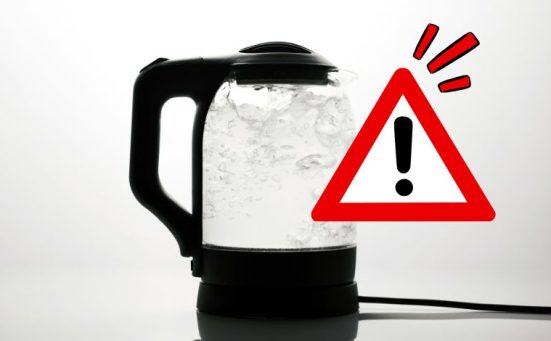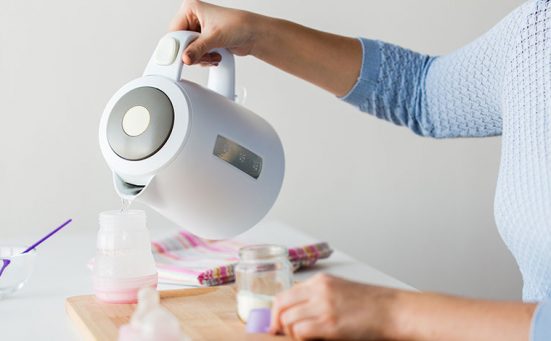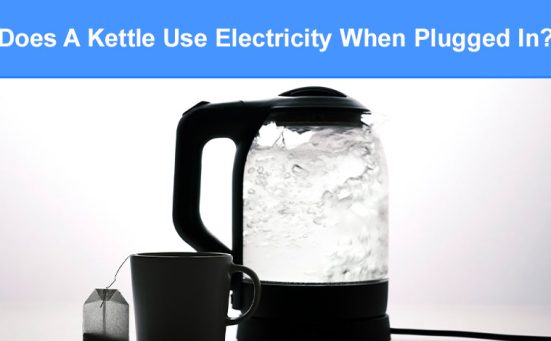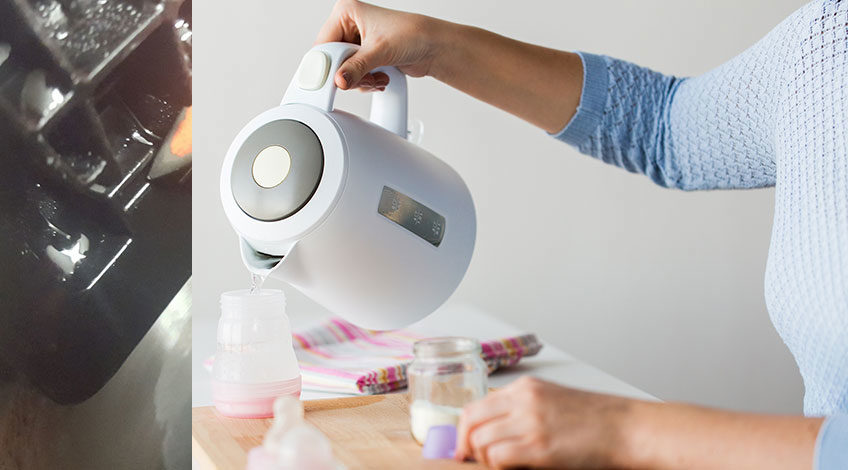
Kettle Not Switching Off When Boiled? (here’s why & what to do)
If your electric kettle is not turning off after boiling, the issue often lies in the buildup of limescale, blocking the steam’s path to the thermostat, which is crucial for the auto shut-off function.
In this article, we’ll show you how to fix limescale buildup and other common issues that may cause this problem.
By the end, you’ll not only be able to solve the issue but maintain your kettle’s performance and ensure its longevity. Continue reading to learn more.
Please note: If you’re looking to buy a more reliable kettle in the future, make sure you read this guide first.
How To Repair A Kettle That Doesn’t Switch Off When Boiling
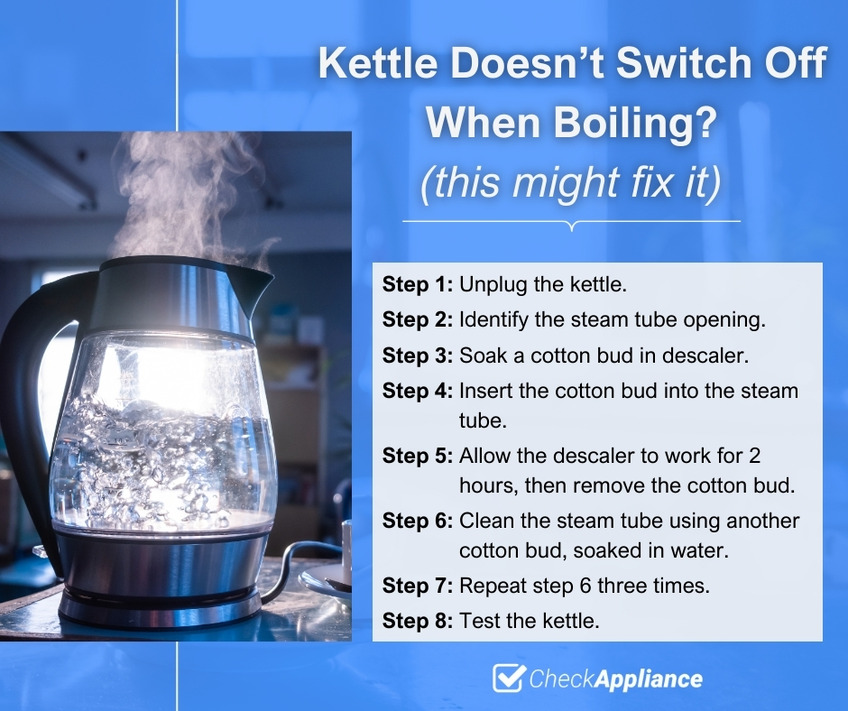
First, verify if your guarantee is still valid; if so, return it to the manufacturer. Should the warranty have expired and you decide to attempt a repair, ensure the kettle is unplugged for safety.
SEE ALSO: Kettle Not Working? (this might be why)
How To Descale A Kettle’s Steam Tube

The kettle, even when descaled, faces limescale accumulation that can partially block its small hole at the top if it’s not specifically cleaned. This buildup may not fully block the hole but can stop steam from reaching the thermostat’s pipe, preventing a necessary metallic reaction and causing the kettle to stay powered on.
To descale your kettle’s steam tube:
- Unplug the kettle and turn off the power socket.
- Open the kettle’s lid. Locate a small opening near the top, opposite the spout.
(Note: shape and location may vary by brand.) - Dip a cotton bud in descaler and insert it into the opening as far as you can.
Avoid dropping it to prevent blockage and potential fire hazards. For a natural descaling solution, mix white vinegar and water in equal parts. - Leave the descaler in for at least 2 hours.
- Use a new cotton bud dampened with water to clean around and inside the opening, removing any residue. Ensure not to drop the cotton bud during cleaning.
- Repeat the rinsing process 3 times.
- Fill the kettle and boil water to test the auto shut-off feature. If the kettle does not shut off automatically, consider replacing it.
SEE ALSO: How To Descale A Kettle
How To Fix An Overfilled Kettle
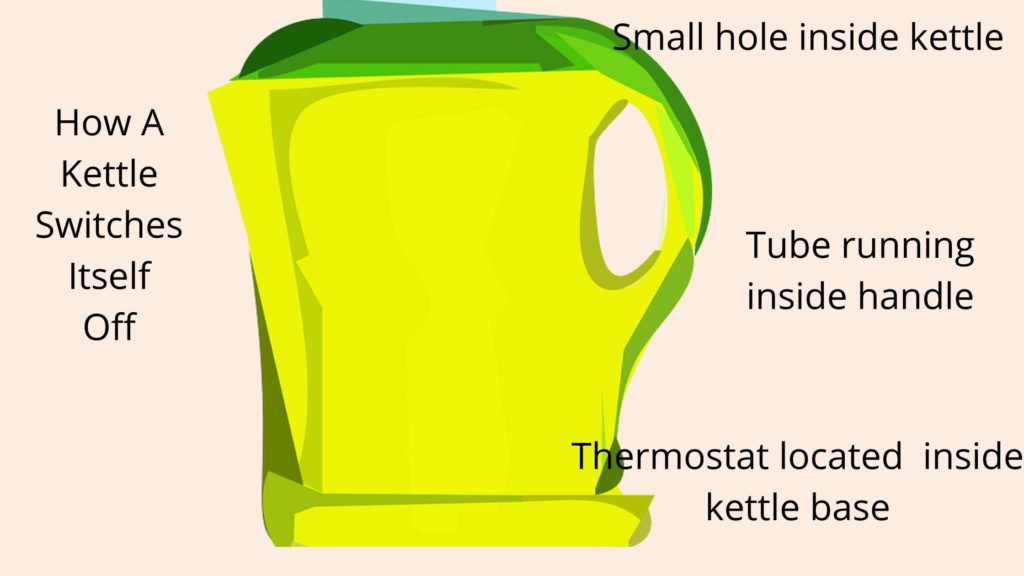
Overfilling your kettle can also prevent it from shutting off. If water enters the steam tube, which directs steam to the thermostat, it may block the steam from reaching the thermostat. As a result, insufficient steam means failing to activate the kettle’s auto-shut off feature.
To fix this, first unplug the kettle, then open the lid to drain the water. Dry the interior with a paper towel and allow it to air dry for 24 hours, letting any excess water evaporate. Remember to never fill the kettle beyond its maximum fill line.
Pro tip: If the kettle’s lid is not securely closed, water takes longer to boil, preventing the automatic shut-off feature from activating because the thermostat cannot detect boiling. Always ensure the lid is properly closed when using your kettle.
Popular Replacement Kettles
- Textured Design – With a honeycomb-textured finish on premium black plastic, this kettle brings style to your kitchen with every brew you make.
- Rapid Boil – With internal 1/2/3 cup indicators, a speedy brew has never been easier. Simply fill your kettle up with the amount of water you need, and Boil One Cup in 43 Seconds*.
- 1.7 Litre Capacity – That’s why the Honeycomb Kettle has an impressive 1.7L Capacity. The perfect size to cater for all, this kettle makes sure your every boiling need is taken care of.
- The Breville HotCup dispenses a 250ml cup size of boiling water even quicker than a kettle, so you can enjoy hot drinks without the wait (250ml of water is dispensed per use, no more or less)
- 1.5L tank holds enough water for 5-7 cups; ideal for instant coffee, tea, hot chocolate, noodles and more. 360 degree base for left and right-hand use
- Push-button lid release makes filling easy; fill at the tap just like a kettle, or using a jug; boils a single cup at a time for energy-efficient, economical use
- Boils a cup of water in under 50 seconds, ideal for busy families
- 2L tank holds enough water for up to 10 cups; perfect for instant coffee, tea, hot chocolate, noodles and more
- Variable single cup dispense allows you to choose from nine different cup sizes; manual stop lets you control flow of water for energy-efficient, economical use
How Does An Electric Kettle Create Heat?
The kettle produces heat using the principle of resistance. An electric current is passed through a metal plate, the metal resists the current which causes the plate to heat. That heat is transferred to the water and in time it boils. Here’s an interesting fact, boiling point is not constant.
The temperature needed to boil water varies according to altitude. For instance at sea level water boils at 100 C (212 F) but at 1 mile above sea level, water will boil at 94 C (202 F). Knowing this means we can work out that a kettle’s cut off point has nothing to do with a thermometer or temperature control.
Why Does A Kettle Get Limescale?
Water collects minerals as it travels through bedrock, in areas of chalk or limestone, the water collects more minerals. Once the water is subjected to heat and begins to evaporate, those elements turn into solids again. They collect on the inside of the kettle and we identify them as limescale.
How Does A Kettle Know When To Switch Off?
This is so clever and yet so simple, once you get your head around it. It’s not a thermometer that controls the kettle, it’s a thermostat. How it works is, 2 different types of metal are bonded together, one has a faster expansion rate than the other under heat. Steam from the boiling water passes over the bimetallic thermostat and the metal changes from a curved position to a curve in the opposite direction.
When the thermostat snaps open, it flicks a switch that cuts the power (like a circuit breaker) and the kettle stops boiling. The steam is introduced to the bimetallic strip via a small tube situated either inside or alongside the handle. There’s a small opening right at the top of the handle inside the water chamber.
As the water boils, it produces steam, this steam travels through the small hole, along the tube and then over the bimetallic strip. Once the steam is hot enough the strip reacts and the switch is activated.
Frequently Asked Questions
Kettles automatically stop boiling due to a thermostat located under the handle base. This thermostat is activated by steam through a tube beginning at the kettle’s top near the handle. Boiling water generates steam to activate the thermostat, which has a bimetallic strip. This strip bends when heated, triggering the cut-off switch.
If a kettle keeps boiling, the water inside will ultimately evaporate completely, highlighting the critical role of the automatic shut-off mechanism in averting potential hazards.
Electric kettles are safe if used correctly. Never overfill and never allow to boil dry.
The thermostat in a kettle is situated at the bottom of the kettle integrated with the heating element.
The heating element of an electric kettle is at the bottom because this allows you to boil less amounts of water. If the heating element was at the top of the kettle you would always have to boil a full kettle of water even if you only needed one cup.
How hot boiling water is from a kettle is dependent on the altitude the kettle is being used at. At sea level water boils at 100 C but at 1 mile above sea level water boils at 94 C.
Water can’t go above 100 C because at 100C it starts to evaporate. This means it changes from a liquid state to a gas, in this case steam.
A Short History Of The Kettle
Over 5,000 years ago the Mesopotamians used a vessel that resembles the shape and form of a kettle to boil water. These first kettles were made from bronze, then over the centuries it was discovered that kettles could be made from iron and they could be placed directly into the fire on the flames.
Jump forward to 1891 and the Carpenter company in the USA developed the first kettle powered by electricity. It wasn’t that popular as it took nearly 12 minutes to boil the water due to the heating element and the water being kept in different chambers. In 1922 the Swan company developed the first electric kettle with an integrated heat element.
Nothing much happened with the design until 1956 when the British company Russell Hobbs introduced the automatic kettle. This design led to where we’re at today with glass kettles, metal kettles and plastic kettles all turning off automatically.
Also, follow us on Pinterest ...


![Breville HotCup Hot Water Dispenser | 3kW Fast Boil |1.5L | Energy-Efficient | Gloss Black [VKJ142]](https://m.media-amazon.com/images/I/41XC-tMkRPL._SL160_.jpg)
![Breville HotCup Hot Water Dispenser | 2.0L with 3kW Fast Boil & Variable Dispense | Energy-efficient use | Gloss Black [VKJ318]](https://m.media-amazon.com/images/I/41SWc-gcjdL._SL160_.jpg)
